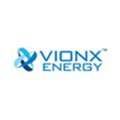
Overview
The energy storage industry focuses on developing technologies and systems to store energy efficiently for later use. This sector encompasses a wide range of technologies, including batteries, pumped hydro storage, flywheels, compressed air energy storage, and thermal energy storage, among others. Energy storage plays a crucial role in enhancing the reliability and stability of power grids, integrating renewable energy sources like solar and wind into the grid, and enabling greater flexibility and resilience in energy systems. It’s a rapidly growing industry driven by the increasing demand for clean energy solutions and the need to address challenges related to grid modernization and decarbonization.
Depending on specific features and functions, GAO Tek’s Combustible Gases Detectors are sometimes referred to as flammable gas detectors, explosive gas detectors, combustion gas sensors, ignitable gas detectors, flare gas detectors, hazardous gas detectors, fuel gas detectors, and burnable gas detectors.
Furthermore, GAO Tek’s combustible gases detectors are further grouped into:
GAO Tek’s Combustible Gases Detectors have the following applications in the energy storage industry:
- Battery Storage Facilities: GAO Tek’s combustible gas detectors are used to monitor the presence of hydrogen gas, which can be produced during the charging and discharging of certain types of batteries, such as lead-acid and lithium-ion batteries. Detecting hydrogen leaks promptly helps prevent potential fire or explosion hazards.
- Hydrogen Storage Systems: In energy storage systems that utilize hydrogen as a storage medium, GAO Tek’s combustible gas detectors are essential for monitoring hydrogen leakage. Hydrogen is highly flammable, and detecting leaks early is critical for safety and preventing accidents.
- Pumped Hydro Storage: While pumped hydro storage systems typically do not involve combustible gases, the associated infrastructure, such as control rooms and electrical equipment, may utilize backup power systems or hydrogen for cooling. In such cases, GAO Tek’s combustible gas detectors are employed to ensure the safe handling and storage of these gases.
- Compressed Air Energy Storage (CAES): Some CAES systems use natural gas as a fuel source for power generation during the energy release phase. GAO Tek’s combustible gas detectors are employed to monitor the presence of natural gas leaks, ensuring safety and preventing potential combustion hazards.
- Thermal Energy Storage (TES): In TES systems utilizing combustible gases for heat generation or storage, GAO Tek’s combustible gas detectors are utilized to monitor for leaks and ensure safe operation.
- Grid-Scale Energy Storage Facilities: Large-scale energy storage facilities connected to the power grid may utilize various energy storage technologies, including batteries and hydrogen storage systems. GAO’s GAO Tek’s combustible gas detectors are deployed to monitor the storage and handling of gases used in these facilities, enhancing safety and reliability.
- Emergency Response Planning: GAO Tek’s combustible gas detectors are integrated into emergency response plans for energy storage facilities, providing early warning of gas leaks and enabling prompt action to mitigate risks and ensure the safety of personnel and nearby communities.
More information on combustible gases detectors and their applications in other industries can be found on
This category page lists related products
Systems in the Energy Storage Industry Combustible Gases detectors
Here are some popular systems in the energy storage industry using combustible gases detectors:
Gas Detection and Monitoring:
- Gas Monitoring Software: Gas Monitoring software interfaces with combustible gas detectors to provide real-time monitoring of gas levels, alerting facility operators to any potential leaks or hazards.
- Gas Leak Detection System: Gas Leak Detection System software uses data from gas detectors to pinpoint the location of gas leaks, allowing for swift and targeted responses to mitigate risks.
Emergency Response Planning:
- Safety System Integration Software: Safety System Integration Software integrates gas detectors with other safety systems, such as fire alarms and emergency shutdown systems, to ensure a coordinated response in case of a gas leak or other emergency.
- Emergency Response Simulation Software: Emergency Response Simulation Software simulates various emergency scenarios, including gas leaks, to help facility operators and emergency responders practice and refine their response plans.
Maintenance and Calibration:
- Maintenance and Calibration Software: Maintenance and Calibration Software tracks the maintenance schedule and calibration status of gas detectors, ensuring they remain accurate and reliable.
- Asset Management Software: Asset Management Software manages the inventory of gas detectors and other safety equipment, tracking their location, usage history, and maintenance records.
Data Analysis and Reporting:
- Data Analysis and Reporting Software: Data Analysis and Reporting Software analyzes historical gas detection data, identifies trends, and generates reports for compliance and performance monitoring.
- Predictive Analytics Software: Predictive analytics software uses data from gas detectors and other sensors to predict potential equipment failures or safety hazards, allowing for proactive maintenance and risk mitigation.
Safety Training and Awareness:
- Online Safety Training Platform: Online Safety Training Platform provides interactive safety training modules for employees, including information on gas detection and emergency response procedures.
- Safety Communication Software: Safety Communication Software facilitates communication between employees and management regarding safety procedures, including updates on gas detection systems and protocols.
GAO Tek’s targeted markets are North America, particularly the U.S. and Canada.
Complying with Government Regulations
GAO Tek’s combustible gases detectors comply or help our customers comply with the U.S. government regulations such as:
- National Fire Protection Association (NFPA)
- National Electrical Code (NEC)
- Standard for the Installation of Stationary Fuel Cell Power Systems
- Occupational Safety and Health Administration (OSHA)
- General Requirements for Battery Rooms
- Battery Room Storage Requirements
GAO Tek’s combustible gases detectors comply or help our clients comply with the Canadian regulations such as:
- Safety Standard for Electrical Installations
- Natural Gas and Propane Installation Code
- Safety Code on Compressed Gases and Cryogenic Fluids
- Hydrogen Technologies — Safety Requirements
- Safety-Related Maintenance Requirements
- Canadian Electrical Code
Case Studies of Combustible Gases Detectors in the Energy Storage Industry
Combustible gases detectors are sometimes called flammable gas detectors, explosive gas detectors, combustion gas sensors, ignitable gas detectors, flare gas detectors, hazardous gas detectors, fuel gas detectors, and burnable gas detectors.
Here are some practical examples of using Combustible Gases Detectors in the energy storage industry:
A battery energy storage system (BESS) is installed in a utility-scale solar farm in upstate New York to store excess energy generated during the day for use during peak demand periods. Combustible gas detectors are strategically placed within the BESS facility to monitor hydrogen levels, as the system utilizes lithium-ion batteries. During routine maintenance, a gas detector detects a minor hydrogen leak from a battery cell. The system automatically triggers an alarm, allowing technicians to quickly isolate the affected area and repair the leak, preventing any safety incidents or damage to the equipment.
A compressed air energy storage (CAES) facility is constructed in Florida to store excess energy from wind farms offshore. The facility utilizes natural gas-fired turbines for energy generation during peak demand periods. Combustible gas detectors are installed throughout the facility to monitor for natural gas leaks. During a routine inspection, a gas detector detects a small leak in a pipeline connection. The facility’s safety protocols are activated, and the leak is promptly repaired, ensuring the safety of personnel and preventing any potential combustion hazards.
A pumped hydro energy storage (PHES) facility is established in Illinois to provide grid stability and support renewable energy integration. While the primary storage medium is water, the facility utilizes backup diesel generators for auxiliary power during emergencies. Combustible gas detectors are integrated into the facility’s safety system to monitor for diesel fuel leaks. During a test of the backup generators, a gas detector detects a small fuel leak. The system automatically shuts down the generator and alerts maintenance personnel, who quickly address the issue, preventing any safety incidents or environmental damage.
A hydrogen energy storage system is deployed in California to store excess renewable energy from solar and wind farms. The facility utilizes electrolysis to produce hydrogen, which is stored in tanks for later use in fuel cells to generate electricity. Combustible gas detectors are installed throughout the facility to monitor hydrogen levels. During a routine inspection, a gas detector detects a potential hydrogen leak near a storage tank. The facility’s safety protocols are activated, and the leak is promptly repaired, preventing any safety incidents or disruptions to operations.
A thermal energy storage (TES) facility is established in Washington state to store excess energy from hydropower plants for use during periods of low demand. The facility utilizes molten salt as the storage medium, heated by concentrated solar power. Combustible gas detectors are installed to monitor for leaks or emissions from the heating system. During a maintenance shutdown, a gas detector detects a small leak in a valve connection. The leak is quickly repaired, ensuring the safe operation of the facility and preventing any potential environmental impacts.
A large-scale battery energy storage system (BESS) is installed in Ontario to store excess energy from a wind farm. The BESS utilizes lithium-ion batteries, which can produce hydrogen gas if not properly managed. Combustible gas detectors are installed in the BESS facility to monitor hydrogen levels. During a routine inspection, a gas detector detects a hydrogen leak from a faulty battery cell. The system triggers an alarm, and the affected cell is isolated and replaced, preventing any safety incidents or damage to the equipment.
A compressed air energy storage (CAES) facility is established in Alberta to provide grid stability and store excess energy from solar farms. The facility utilizes natural gas-fired turbines for energy generation during peak demand periods. Combustible gas detectors are integrated into the facility’s safety system to monitor for natural gas leaks. During a maintenance check, a gas detector detects a small natural gas leak from a valve. The leak is quickly repaired, ensuring the safety of personnel and preventing any potential combustion hazards.
A pumped hydro energy storage (PHES) facility is constructed in Quebec to store excess energy from hydroelectric power plants. While the primary storage medium is water, the facility utilizes backup diesel generators for auxiliary power during emergencies. Combustible gas detectors are installed to monitor diesel fuel leaks. During a test of the backup generators, a gas detector detects a small fuel leak. The system automatically shuts down the generator, and maintenance personnel address the issue, preventing any safety incidents or environmental damage.
A hydrogen energy storage system is deployed in British Columbia to store excess renewable energy from solar and wind farms. The facility utilizes electrolysis to produce hydrogen, which is stored in tanks for later use in fuel cells to generate electricity. Combustible gas detectors are installed throughout the facility to monitor hydrogen levels. During a routine inspection, a gas detector detects a potential hydrogen leak near a storage tank. The leak is promptly repaired, ensuring the safety of personnel and preventing any disruptions to operations.
A thermal energy storage (TES) facility was established in Manitoba to store excess energy from biomass power plants. The facility utilizes molten salt as the storage medium, heated by biomass combustion. Combustible gas detectors are installed to monitor leaks or emissions from the heating system. During a maintenance shutdown, a gas detector detects a small leak in a valve connection. The leak is quickly repaired, ensuring the safe operation of the facility and preventing any potential environmental impacts.
GAO RFID RFID Hardware, a sister company of GAO Tek Inc., is ranked as a top 10 RFID suppliers in the world. Its RFID, BLE, and IoT products have also been widely used in the energy storage industry. Articles about related industries are given below:
Electrical Equipment Manufacturing Industry
Use of Combustible Gases Detectors with Leading Software and Cloud Services in the Energy Storage Industry
GAO Tek has used or has facilitated its customers to use GAO’s combustible gases detectors with some of the leading software and cloud services in their applications. Examples of such leading software and cloud services include:
- Honeywell Safety Suite
- MSA ALTAIR Connect
- Dräger X-am® 8000
- Industrial Scientific Ventis Pro Series
- RAE Systems AreaRAE Plus
- BW Technologies by Honeywell GasAlertMax XT II
- Siemens Combustible Gas Detector Series
- Emerson Rosemount CT5400 Continuous Gas Analyzer
- General Monitors S5000 Gas Monitor
- Det-Tronics GT3000 Toxic Gas Detector
- Schneider Electric Tricon CX Compact Safety System
- Yokogawa TDLS8000 Tunable Diode Laser Spectrometer
- ABB Ability™ Smart Sensor for gas detection
- Google Cloud Platform
- Microsoft Azure
- Amazon Web Services (AWS)
- IBM Cloud
- Oracle Cloud
- Salesforce IoT Cloud
- Cisco IoT Cloud
- GE Predix
- Siemens MindSphere
- Schneider Electric EcoStruxure™ Platform
- Honeywell Forge for Industrial
- Emerson Plantweb Optics
- Rockwell Automation FactoryTalk InnovationSuite
GAO Tek’s combustible gases detectors and their applications in other industries are listed on
Other related products can be found at this category page
Meeting Customers’ Demands
Large Choice of Products
In order to satisfy the diversified needs of their corporate customers, GAO Tek Inc. and its sister company GAO RFID Inc. together offer a wide choice of testing and measurement devices, network products, RFID, BLE, IoT, and drones.
Fast Delivery
To shorten the delivery to our customers, GAO has maintained a large stock of its products and is able to ship overnight within the continental U.S. and Canada from the nearest warehouse.
Local to Our Customers
We are located in both the U.S. and Canada. We travel to customers’ premises if necessary. Hence, we provide a very strong local support to our customers in North America, particularly the U.S. and Canada.
Furthermore, we have built partnerships with some integrators, consulting firms and other service providers in different cities to further strengthen our services. Here are some of the service providers in the energy storage industry we have worked with to serve our joint customers:
- 3DFS
- Accenture
- Advanced Energy Storage Management (AESM)
- Advanced Microgrid Solutions (AMS)
- Black & Veatch Management Consulting
- BluWave-ai
- Booz Allen Hamilton
- Boston Consulting Group (BCG)
- Capgemini
- CGI
- CleanSpark, Inc.
- Cognizant
- Deloitte
- Doosan GridTech
- eCamion Inc.
- Eguana Technologies Inc.
- Enel X North America
- Ernst & Young (EY)
- ESS Inc.
- lexGen Power Systems
- Fluence (a Siemens and AES company)
- Gartner
- Green Charge Networks (a subsidiary of ENGIE)
- Greensmith Energy (a Wärtsilä company)
- Habitat Energy
- Hitachi Consulting
- Hydrostor Inc.
- IBM Global Business Services
- Ideal Power
- Infosys
- KPMG
- Lockheed Martin Energy
- McKinsey & Company
- NantEnergy
- Navigant Consulting
- NEC Energy Solutions
- NRStor C&I LP
- NRStor Inc.
- Ormat Technologies
- Peak Power Inc.
- Planetary Power Solutions
- Powervault Ltd.
- Powin Energy
- PricewaterhouseCoopers (PwC)
- RMI Consulting
- S&C Electric Company
- Sharp Electronics Corporation
- SimpliPhi Power
- Stem, Inc.
- Sunverge Energy
- Tata Consultancy Services (TCS)
- Temporal Power Ltd.
- Tesla Energy
- Wipro Limited
- Younicos
GAO has Many Customers in the Energy Storage Industry
The products from both GAO Tek Inc. and GAO RFID Inc. have been widely used in the energy storage industry by many customers, including some leading companies. Here is more information on applications of GAO RFID Inc.’s products in the energy storage industry. Articles about related industries are given below:
Electrical Equipment Manufacturing Industry
Here are some of GAO’s customers in the energy storage industry:
- 174 Power Global
- AES Energy Storage (Fluence)
- Convergent Energy + Power
- Duke Energy
- ENGIE Storage
- Florida Power & Light (FPL)
- Geronimo Energy
- GlidePath Power Solutions
- SoCore Energy
- Key Capture Energy
- Stem, Inc.
- Tesla Energy
- NRStor Inc.
- Hydrostor Inc.
- Eguana Technologies Inc.
- Temporal Power Ltd.
- Vionx Energy Corporation
- BluWave-ai


















Contact Us
Here are GAO Tek’s Combustible Gases Detectors and they are further organized by feature:
If you have any questions about our products or want to place an order, our technical experts can help you.
Please Fill out this form or Email us.
